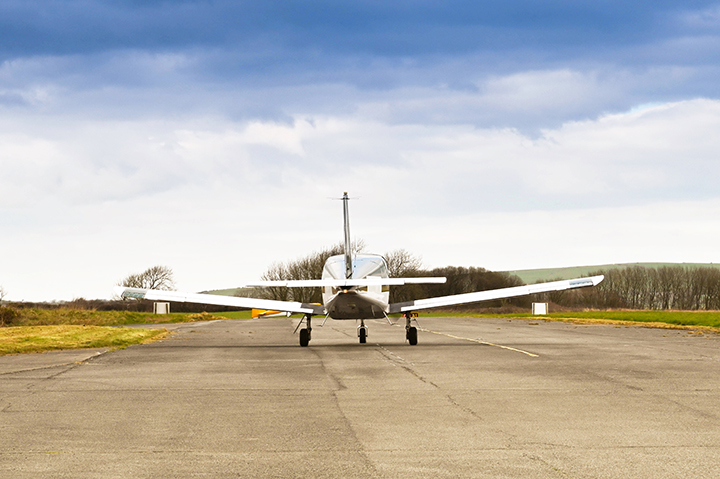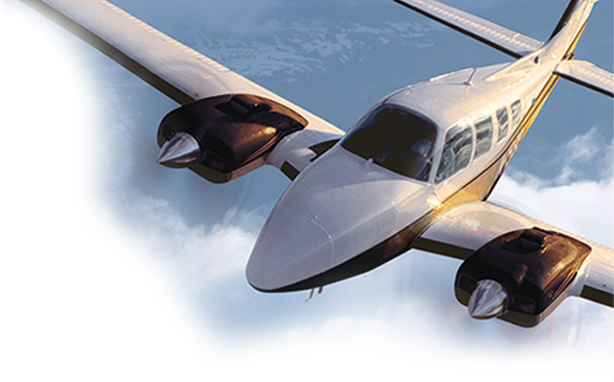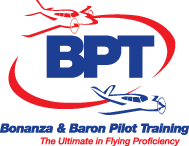Taxiing – One of the
First Skills You Learned
By Avemco Insurance Company

Why do many pilots get into trouble when taxiing along a runway?
Part of the answer is revealed in the statistics we have examined.1 The most dangerous time for pilots isn’t when they’re students, but long after they have obtained their license. The longer we fly, the longer nothing goes wrong, and the more confident we get, until complacency sets in, and one becomes just a little too confident.
This is true for taxiing, as well as all other phases of flight. We will address the initial phase here.
Avemco Insurance Company defines a taxi loss as “one that occurs anytime an airplane incurs damage or loss while moving under its own power on an airport other than in the process of taking off or landing”.
Please note that these comments and statistics are from the Avemco claims files, not from NTSB or FAA records.
- Taxi losses seldom happen to pilots with less than 50 total hours. New pilots are typically very cautious pilots. They are on alert for everything. And what they don’t want to do is bend up an airplane. Plus, they’re often in the airplane with an instructor. Two sets of eyes are better than one; if the student gets distracted, the instructor is there to stop the airplane before there is a problem.
- Once pilots pass the 50-hour point, and until they have about 2,500 total flight hours, taxi mishaps account for about 11% of all claims for this pilot experience group. At around 50 hours, many pilots pass the Private or Sport Pilot checkride. Then they’re on their own. That feeling of self-satisfaction or contentment starts to replace anxiety. And there’s usually no longer a CFI in the right seat.
- Interestingly enough, the taxi mishap rate increases to 13% for pilots with more than 2,500 hours total time. Why? You guessed it – most likely complacency. Experienced pilots may try to run checklists while they are taxiing, causing a division of attention that leads to a collision or taxiway excursion. Someone who has flown this much is probably in an airplane equipped with a GPS or even a full glass cockpit. The distractions of advanced panel equipment may cause the pilot to focus inside the airplane. If the aircraft is in motion at the time, and no one is looking outside, it’s far more likely to run off the pavement or collide with an object. And by an object, we mean four-legged critters too!
The taxi loss record by time-in-type also follows the trends noted above. Pilots who have less than 50 hours in make and model have the lowest rate of taxi mishaps. They are probably not comfortable enough yet with the airplane to let their eyes and minds wander during taxi. The rate of taxi claims goes up when the pilot has 50 to 100 hours in make and model, probably an indication that a bit of confidence has started to set in. The pilot who logs more than 100, but less than 500 hours in type, has a moderate, but still reasonably low rate of taxi claims. With more than 500 hours in type, you may fall into the trap of multi-tasking and an avionics distraction causes the taxi-rate loss to soar.
How can you avoid taxi mishaps?
Make it your top priority to pay attention to what you’re doing, keep your head out of the cockpit, and continuously remind yourself to focus on taxiing and nothing else. Avemco statistics show that pilots who program the GPS or run checklists while the airplane is in motion have a far higher rate of taxi collisions than their level of experience would suggest.
Every time you step into the cockpit, think about your mindset when you had less than 50 hours, and when you were cautious. You checked and even double-checked everything. It will help you avoid such avoidable accidents in the future.
1Editor’s Note: All statistics are from Avemco claims experience as of 10/2019 and are not from the FAA or the NTSB.



